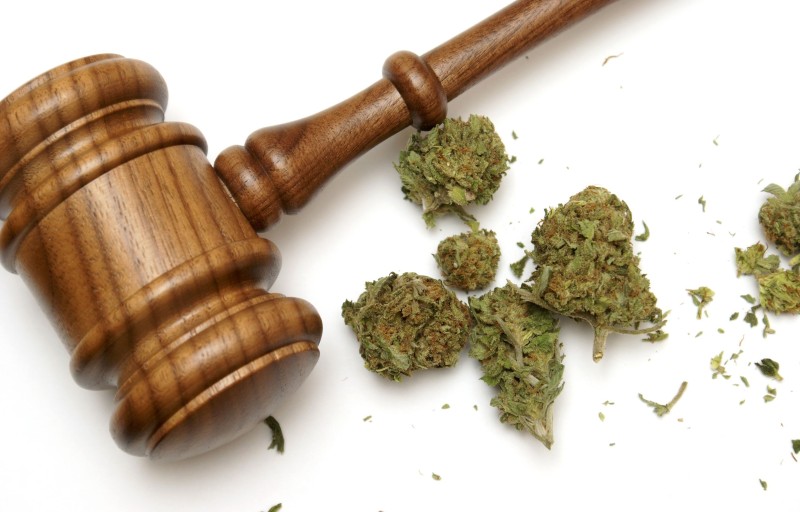
The Changing State of Drug Policy
Often overlooked in discussions of drug policy today is the nature of the drug problem. The global drug problem can be traced to the innate nature of the human brain. The mammalian brain is extremely vulnerable to chemicals that stimulate brain reward. These chemicals are drugs of abuse. They produce far more intense brain reward than any natural reward, even sex and food. The repeated use of drugs of abuse leads to addiction. In its definition of addiction, the American Society of Addiction Medicine notes that it is “characterized by inability to consistently abstain, impairment in behavioral control, craving, diminished recognition of significant problems with one’s behaviors and interpersonal relationships, and a dysfunctional emotional response” (American Society of Addiction Medicine, 2011).
Addiction is a chronic, often fatal, illness that typically begins in adolescence. The earlier an individual uses drugs of abuse, including alcohol and marijuana, the more likely it is that that the person will develop a substance use disorder later in life (National Institute on Drug Abuse, 2010). The best way to prevent addiction is to prevent the use of these substances. As a 13-year-old said to me years ago, “I don’t want to try cigarettes because I might like them.”
While the biology of addiction has not changed for millions of years, over the past half-century drug use has changed dramatically. In the modern drug abuse epidemic, whole populations are exposed to a mind-bending array of drugs of abuse by powerful routes of administration. This has never happened before in human history.
Marijuana, the most widely used illegal drug, has been transformed in the time since the peak of its use in the United States in 1978. The potency of marijuana, as measured by the level of THC (the primary active cannabinoid in marijuana), has tripled over this time (Drug Enforcement Administration, 2014). New modes of marijuana consumption have increased the potency of marijuana delivery. For example, butane hash oil contains dramatically high levels of THC, with concentrations up to 90 percent.
The addiction landscape also has changed as a result of the nonmedical use of legal prescription drugs. Americans, who constitute less than 5 percent of the world’s population, consume 80 percent of the global opioid supply (Manchikanti, Fellows, Ailinani, & Pampati, 2010). With widespread medical use of opioid analgesics has facilitated an epidemic of opiate dependence. The number of drug overdose deaths in the U.S. has surpassed highway fatalities (Centers for Disease Control and Prevention, 2014). The widespread use of prescription drugs has led to changes in the demographics of heroin use and subsequent heroin overdoses(Kuehn, 2014; Johnson, 2014). Forty years ago heroin addiction was mostly confined to young, inner-city men who often were involved in criminal activities. The new demography of heroin is the result of the demography of those that use pain medications nonmedically. An estimated half of young injection heroin users abused prescription opioids prior to their heroin use (National Institute on Drug Abuse, 2013). Heroin addiction has reached all parts of the country, especially small towns and rural areas. Heroin use is no longer limited to minority, male, or lower income populations (Cicero, Ellis, Surratt, & Kurtz, 2014).
The drug epidemic continues to evolve in complex ways even as public attitudes toward the use of drugs are shifting. Attitudes today are far more permissive toward the “recreational” use of drugs, especially marijuana. National polls indicate that a growing majority of Americans now favor legalization of marijuana for “recreational” use by adults (Pew Research Center, 2014).
The well-funded lobby promoting the normalization of the use of marijuana (and other drugs) is based on the erroneous premise that marijuana is not only safe but also beneficial. In contrast to this view, the science is clear that marijuana use is a serious threat to health, safety and productivity (Volkow, Baler, Compton, & Weiss, 2014). As the negative impact of legal marijuana in the states of Colorado and Washington—and in the states that permit “medical” marijuana—is more widely understood, attitudes toward permissive drug use will likely shift once again.
The U.S., and the entire world, is at a crossroads in drug policy today with two oppositional perspectives on the future of drug policy. On the one hand is the current global drug policy, established in the first decades of the 20th century, with the U.S. in the lead, which separates medical use from nonmedical use of drugs with abuse potential. Under this framework, the goal of drug policy is to limit the use of drugs of abuse to medical uses only. Drugs of abuse are provided only through the process of physicians’ prescriptions and dispensed at pharmacies in a closed system and only for the treatment of diseases. The use of drugs of abuse outside of this very limited medical practice and their sale is illegal, punishable by the criminal law.
On the other hand, this well-established formulation of drug policy is now threatened by an alternative vision that treats drugs of abuse the way alcohol and tobacco are treated: regulated production and sale to adults for legal use for any purpose. The campaign for this alternative drug policy begins with the legalization of marijuana but the stakes are far greater because the policy applies to all drugs of abuse and there are enormous potential profits to be earned in this new marketplace (Richter & Levy, 2014). This move erases the sharp line between legal and illegal drugs. Erasing this line frustrates prevention and it opens the floodgates to widespread drug use.
When considering the potential public health impact of the legalization of drugs of abuse, including marijuana, it is helpful to consider the rates of use of the two legal drugs. Among Americans age 12 and older, 52 percent used alcohol and 27 percent used tobacco in the past month, whereas 9 percent used any illegal drug (Substance Abuse and Mental Health Services Administration, 2013). Only 7 percent of Americans used marijuana. Treating marijuana—to say nothing of other drugs of abuse—the way alcohol and tobacco are treated most certainly will increase availability and with it dramatically increase the level of marijuana use to a level that is similar to the use of the two currently legal drugs.
Is increased marijuana use and subsequent proportional increases in marijuana addiction in the interest of the nation’s public health? I don’t think so. The use of alcohol and tobacco are the two leading causes of preventable illness and death in the United States. Adding a third legal drug will add to the devastation that these legal drugs already generate.
What is the better answer for the future of drug policy, if it is not the legalization and regulation of drugs of abuse? The future of an effective drug policy lies in finding ways to reduce the use of drugs of abuse that are compatible with modern values and laws. This search for better ways to reduce illegal drug use is the focus and the agenda of the Institute for Behavior and Heath, Inc. There are many good new ideas for drug policy, all based on the recognition of the vulnerability of the brain to the excessive, unnatural stimulation of brain reward mechanism by drugs of abuse which leads to addiction for millions of people and the resulting devastation suffered by these individuals, their families and their communities.
Rather than embrace drug legalization, we must develop innovative policies and programs that reduce the use of drugs of abuse and we must provide assistance, including quality treatment that achieves long-term recovery, to those with substance use disorders.
References
American Society of Addiction Medicine. (2011). Public policy statement: definition of addiction. Chevy Chase, MD: American Society of Addiction Medicine. Retrieved from http://www.asam.org/advocacy/find-a-policy-statement/view-policy-statement/public-policy-statements/2011/12/15/the-definition-of-addiction
Centers for Disease Control and Prevention. (2014). Prescription drug overdose in the United States: Fact sheet. Atlanta, GA: Centers for Disease Control and Prevention. Retrieved from http://www.cdc.gov/homeandrecreationalsafety/overdose/facts.html
Cicero, T. J., Ellis, M. S., Surratt, H. L., & Kurtz, S. P. (2014). The changing face of heroin use in the United States: A retrospective analysis of the past 50 years. JAMA Psychiatry, 71(7), 821-826.
Drug Enforcement Administration. (2014). The dangers and consequences of marijuana abuse.Washington, DC: Drug Enforcement Administration Demand Reduction Section, U.S. Department of Justice. Retrieved from http://www.justice.gov/dea/docs/dangers-consequences-marijuana-abuse.pdf
Johnson, K. (2014, April 17). Heroin is a growing threat across USA, police say. USA Today. Retrieved from http://www.usatoday.com/story/news/nation/2014/04/16/heroin-overdose-addiction-threat/7785549/
Kuehn, B. M. (2014). Driven by prescription drug abuse, heroin use increases among suburban and rural whites. JAMA, 312(2), 118-119.
Manchikanti, L., Fellows, B., Ailinani, H., & Pampati, V. (2010). Therapeutic use, abuse, and nonmedical use of opioids: A ten-year perspective. Pain Physician, 13(5), 401-435.
National Institute on Drug Abuse. (2010). Drugs, brains and behavior: The science of addiction. NIH Pub No. 10-5606. Rockville, MD: National Institute on Drug Abuse, National Institutes of Health, U.S. Department of Health and Human Services. Retrieved from http://www.drugabuse.gov/sites/default/files/sciofaddiction.pdf
National Institute on Drug Abuse. (2013, April). Heroin. DrugFacts. Rockville, MD: National Institute on Drug Abuse, National Institutes of Health, U.S. Department of Health and Human Services. Retrieved from http://www.drugabuse.gov/sites/default/files/drugfacts_heroin_final_0.pdf
Pew Research Center. (2014, April 2). America’s new drug policy landscape. Washington, DC: Pew Research Center. Retrieved from http://www.people-press.org/files/legacy-pdf/04-02-14%20Drug%20Policy%20Release.pdf
Richter, K. P., & Levy, S. (2014, June 11). Big marijuana—lessons from big tobacco [Perspective]. The New England Journal of Medicine. Retrieved from http://www.nejm.org/doi/full/10.1056/NEJMp1406074
Substance Abuse and Mental Health Services Administration. (2013). Results from the 2012 National Survey on Drug Use and Health: Summary of National Findings, NSDUH Series H-46, HHS Publication No. (SMA) 13-4795. Rockville, MD: Substance Abuse and Mental Health Services Administration.
Volkow, N. D., Baler, R. D., Compton, W. M., & Weiss, S. R. B. (2014). Adverse health effects of marijuana use. The New England Journal of Medicine, 370(23), 2219-2227.








